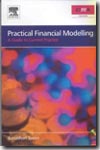Practical financial modelling
a guide to current practice
- ISBN: 9780750686471
- Editorial: Elsevier Science
- Fecha de la edición: 2008
- Lugar de la edición: Amsterdam. Países Bajos
- Edición número: 2nd ed
- Encuadernación: Rústica
- Medidas: 24 cm
- Nº Pág.: 275
- Idiomas: Inglés

"Practical Financial Modelling" is for all finance and management professionals whose work involves the development or use of complex spreadsheets and financial models. The second edition now covers Excel 2007. Chapter 1: Model structure now includes a review of non-spreadsheet modelling tools. Chapter 2: Quality control now contains a new section to include Excel's in-built audit functionality; and further audit checks. Chapter 3: Mainly formulae now includes a number of worked examples for eg cash cascades, cash sweeps, sinking funds etc. Chapter 5: Model use, has under gone a substantial revision, and now includes reporting and charting techniques.In order to accomodate both Excel 2003 users and new Excel 2007 users the book has an extensive appendix which shows "how to do it in Excel 2003 and how to do it in Excel 2007" as comparison. This book follows on from the previous very successful first edition by offering a refreshingly simple approach to building and using financial models. Most models in use today are as unique as the individuals who create them, and because of this they can be difficult to understand or use with confidence.This book offers a critical insight into current practice and presents a clear and robust modelling methodology with the specific aim of reducing unnecessary complexity in favour of a simpler and more reliable approach, which will be of interest to both experienced and novice modellers. This methodology has been used for some of the most modelling intensive transactions in the world, but is also equally applicably to reader creating simple cash flow forecasts."Practical Financial Modelling" bridges the gap between the Excel manual and the finance textbook. The principle is that once people have the ability to structure a model, they have a better starting point from which to address the financial calculations. Quality control is built in from the outset. The key themes of the book are model structure, audit, formulae and functions,
It accompanie CD-ROM







